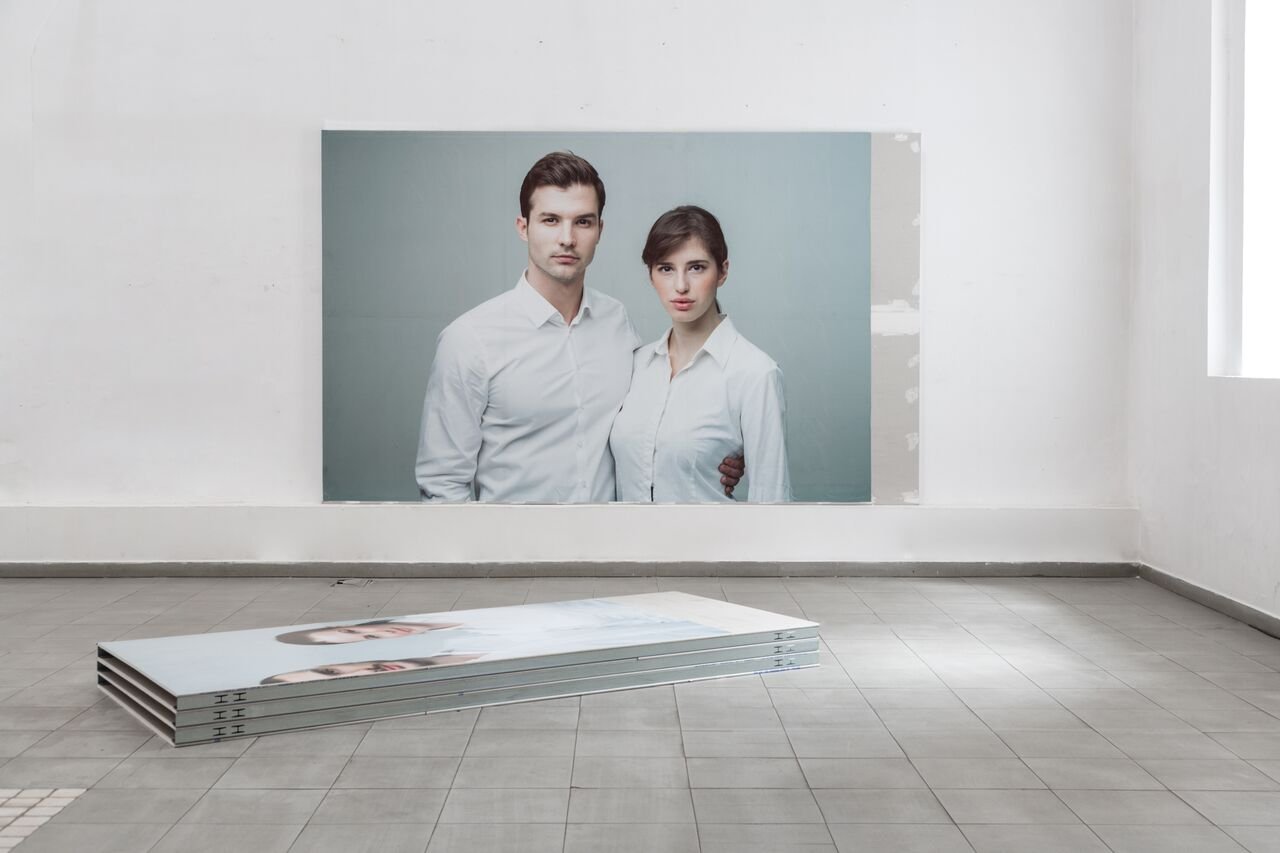
Žižić/Kožul - ‘Recurring Landscapes’
05.05.2016 to 05.06.2016
Cifte Hammam, National Gallery of Macedonia, Skopje
Curated by Ana Frangovska and NOMAD
Artists: Damir Žižić and Kristian Kožul
Image courtesy: Damir Žižić
Partners: Nomad Zagreb, Croatia Airlines
This is the first solo show by Žižić/Kožul in Macedonia. It brings together several installations produced specifically for the Cifte Amam space, deriving from artists' recent body of work.
Cifte Amam was an old mosque in the centre of the Old Bazaar and nowadays is a contemporary art gallery where prominent domestic and foreign artists exhibit their works.
Artists focus on commenting products and habits of members of the consumer society. This exhibition focuses on series of works tackling with phenomena of preferable representation and generic experience, to emphasize the transformation of the mental landscape under the influence of the global market and propaganda.
Recognizable Landscapes (Aquamarine) questions the recognizability of the authentic. The canvas ad displays an industrial ink jet print of the sun's fragmented shimmer in a swimming pool, which covers the whole surface of the canvas. A computer – generated landscape uses reality only as a visual foundation upon which a completely fictional scene is built and offered to the viewer as a recognizable fragment of the perfect summer experience. What is interesting is the moment of the formation of the collective of global scenes, which replace the authentic experience. By compensating our own impression's lack of intensity, the subjects borrow an increasing amount of suggested, yet never experienced scenes in order to form a psychotic amalgam of the experienced and the inexperienced, which they share with all the subjects who have at a particular moment decided to ''replace'' a part of their authentic memories with – scenes from a prospectus.
In the work Cassis Cornuta, artists tackle with the notion of souvenir as an object acquired for the memories the owner associates with it. Typically the memories created through experiences in a specific geographic destination. However, the particular mollusk shell used as a model, although bought in one of the numerous souvenir shops on Mediterranean coast is actually a Pacific and Indian ocean native. There is no apparent connection between the shell itself and the place where it was acquired. It has been widely romanticized for the particular hum one hears when he leans the ear towards the shell – hum of ocean waves. It’s “transplant nature” made it perfect for the role of the generic non-identity symbolic object. It has no particular reference to the geographic location or local cultural heritage, in a sense it is a fictional “blank” – a symbolic object integrated into the global tourism iconography – but apart from inscribed personal experience acquired with purchase – it is a merely a surrogate.
On one hand the work questions the possibility of genuine cultural experience in the frameworks of the tourism industry, on the other it elaborates the possibility of the “emotional graft” – our own ability to tie memories and experiences to an object displaced from it’s own native socio geographical loci and unrelated in any meaningful way to the place of purchase. It is a generic memento, memory container constructed from absurdly unrelated components.
In the work Happy Couple they investigate established processes of marketing that rely primarily on subconscious abuse through various levels of intentional manipulative suggestion. The work exploits our willingness to accept correlations between various visual signifiers with the aim to tie the pleasurable experience and memories (possibly even fictional ones) to the subject. Artists transform that subject into a carrier vessel for a syntax of otherwise unrelated phenomena. Grafting unrelated symbolic content onto material/ideological subject results in establishment of emotional relation towards the subject and hence - illogical and orchestrated choices concerning it.The aim was to create an image of a happy generic heterosexual couple that are easy to identify with and able to convey the genuine feeling of satisfaction and happiness. It was an experiment in fabricated emotional communication that produced a series of images that convey the desired emotions with various level of success.





